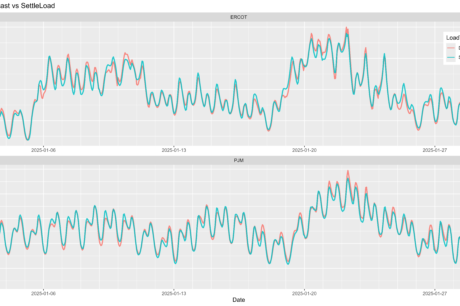One year ago, Winter Storm Uri caused catastrophic damage to Texas resulting in power loss for more than 4.5 million people and roughly 57 people died from hypothermia.1 The record-setting storm plunged the state into below-freezing temperatures for over a week. It’s estimated the economic toll Texas sustained ranged from $80-$130 billion due to power loss, infrastructure damages, and economic opportunities.2 As we face more February cold blasts, Texans wonder if things are better today than a year ago.
Soon after the storm ended, several key bills were passed and signed by the governor in an effort to prevent future disasters like those during Uri. Changes to the Electric Reliability Council of Texas (ERCOT) became effective in 2021, including reducing the number of ERCOT board members from 16 to 11 individuals, who must reside in Texas. Eight of those members must be selected by a three-member board selection committee, appointed by the governor, lieutenant governor, and the House speaker, with executive-level experience. The number of Public Utility Commission (PUC) commissioners were increased from three to five individuals who must reside in Texas. Additionally, the PUC must approve all rules adopted/enforced by ERCOT as part of ERCOT oversight. By September 2021, Texas began prohibiting retail electricity providers from selling “wholesale indexed” service plans to residential customers.3
Other legislations that passed include implementing a statewide alert system to designated media outlets when PUC/ERCOT deem the power supply is potentially inadequate to meet demand and expanding of the Texas Energy Reliability Council (TERC) to supplement regulations of Texas’ electric power markets. The new statutes also established the Texas Electric Supply Chain Security and Mapping Committee to create an electric supply chain map of all natural gas facilities and practices required for electric generation facilities. Also, there is regulation enforcing weather emergency preparedness requirements on certain energy facilities to weatherize including electric generation and utilities.4
One of the biggest obstacles Texas faced during the winter storm was the supply of natural gas which many power facilities rely on to generate electricity. During Uri, delivering natural gas to power plants became unsuccessful, causing facilities to shut down. In January, there were dips in natural gas production ranging between 15-25%5 from temperature lows but nowhere near the temperature experienced during Uri. This could be a red flag.
A lookback study was conducted by the Texas Oil & Gas Association on two natural gas production fields located side-by-side in the Texas Permian Basin during last year’s winter storm.6 During Uri, production declined at both sites. Site A, tied to a residential system, showed a decline in production to only 67%. Site B, not tied to a residential system, declined in production to 14% and lost power on Feb. 15. The study showed that if power were kept on, then production would have been maintained at a reasonable level.
The natural gas storage supply in Texas is 544 billion cubic feet7 (bcf), with a capacity of 847 bcf. Facilities producing electricity only use about 4 bcf daily during normal winter conditions. Texas should consider tapping into stored supply during extreme weather conditions rather than sourcing natural gas from suppliers 600+ miles away. Although there is a stored supply of natural gas, usage must be planned for and purchased before a storm. Securing supply, storage, and transportation contracts ahead of storms should balance any production declines associated with extreme weather events.
The Texas Railroad Commission currently is requiring essential natural gas facilities to register as “critical infrastructure”8 to avoid loss of power in severe weather. The RRC’s request does not include weatherization requirements for the natural gas facilities, but the Texas Legislature has issued a deadline for winterization to the Commission; though, that future deadline is more than a year out. (Date undisclosed.) Currently, officials are also waiting on the completed infrastructure mapping of the Texas natural gas supply used for critical needs in extreme weather conditions.
In addition, gas operators and generators are not yet on the same page. In January, natural gas pipeline operator, Energy Transfer LP, threatened to deny fuel delivery to Luminant, a subsidiary of Vistra Corp, due to fee disputes from high bills incurred from last February’s freeze9 10. This potential interference to Luminant’s five power plants would disrupt approximately 400,000 homes, businesses, and critical infrastructures. This dispute has yet to be resolved as of the date of this article.
As electric and natural gas facilities comply with the new regulations in the upcoming year(s), Texans should anticipate a better equipped and more responsive behavior from ERCOT and the PUC if another winter storm hits Texas. However, Texas is not 100% prepared. Although legislations passed mostly affecting electric generators, natural gas suppliers received a more lenient approach to the winterization requirements which will affect electricity generation during a storm.11 The process of using electricity to heat gas providers which in turn supply gas to electric companies has not changed. Legislators need to create a comprehensive policy that covers the generation, natural gas supplier, and reliability for the consumer. Both the state and industry could also benefit from consulting with those who have been successful with these issues in other states or nations. Weather extremes are not unique to Texas and experts exist who can support the changes that are necessary. Until substantial changes occur, this type of disaster will continue happening again, and consumers will always be the ones who suffer the consequences.
By Tammy Wu & Alisa Truax, CAPCO











